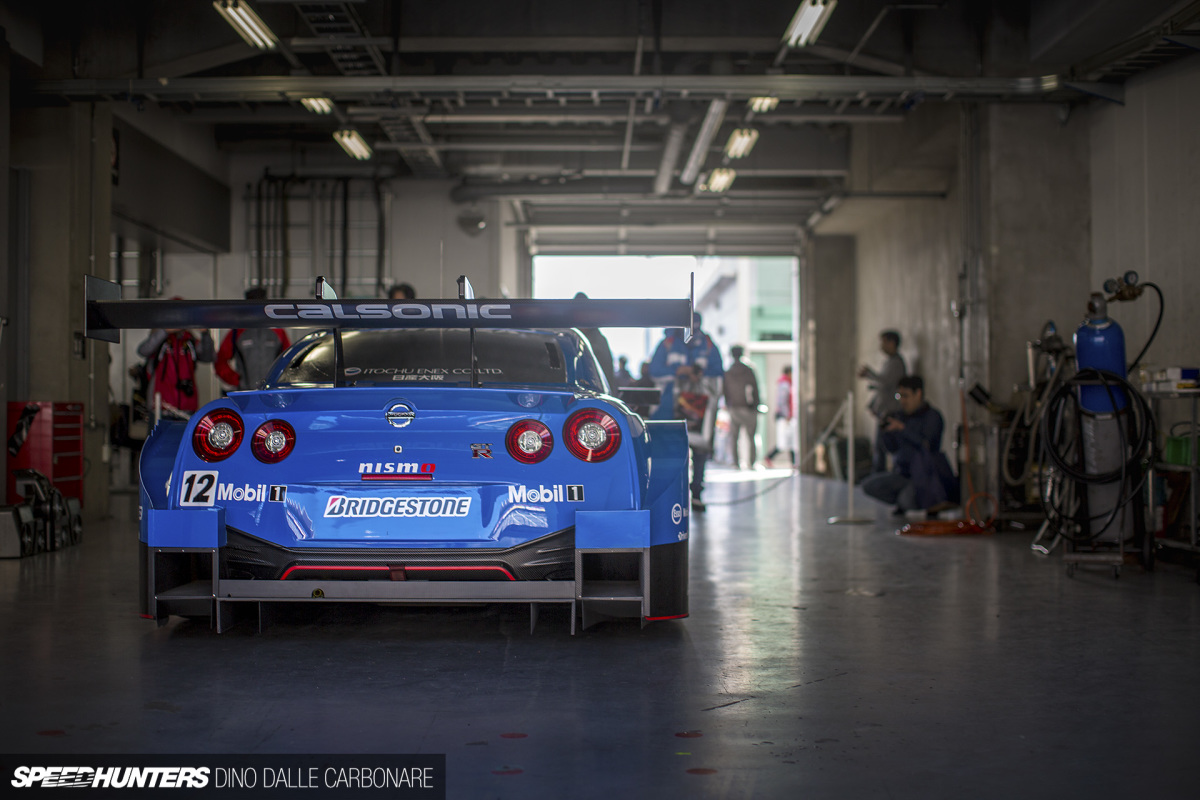
In 2014, when Super GT began to align its regulations with the DTM series in preparation for a combined ‘Class One’ future (which looks set to happen in 2019), GT500 underwent one of the biggest changes it’s ever seen.
Mechanically, all cars from the three manufacturers – Honda, Toyota and Nissan – switched to turbocharged 2.0-liter engines, immediately doing away with the unique character that separated them from each other. But this is for the good of the sport as GT500 cars will soon be able to mix with those in the DTM and vice-versa, creating more interesting racing.

But before any of that happens, GT500 is still GT500, and this year in particular has seen some changes to the most striking part of the cars – their exteriors. After some concerns last season that the cars in the class were generating cornering speeds that were too high, the regulations were updated to reduce downforce by 25%. The result is what you see here – at least as far as the GT-R is concerned.

During a rare moment of silence in the Fuji Speedway pit where one of the Calsonic cars was housed for the recent Nismo Festival, I decided to hang around for a moment or two and take a closer look at some of the parts that make up its aerodynamic package.

From a distance these cars appear intricately complex, but if you take a step closer, you can kind of understand why a particular design cue may be there.
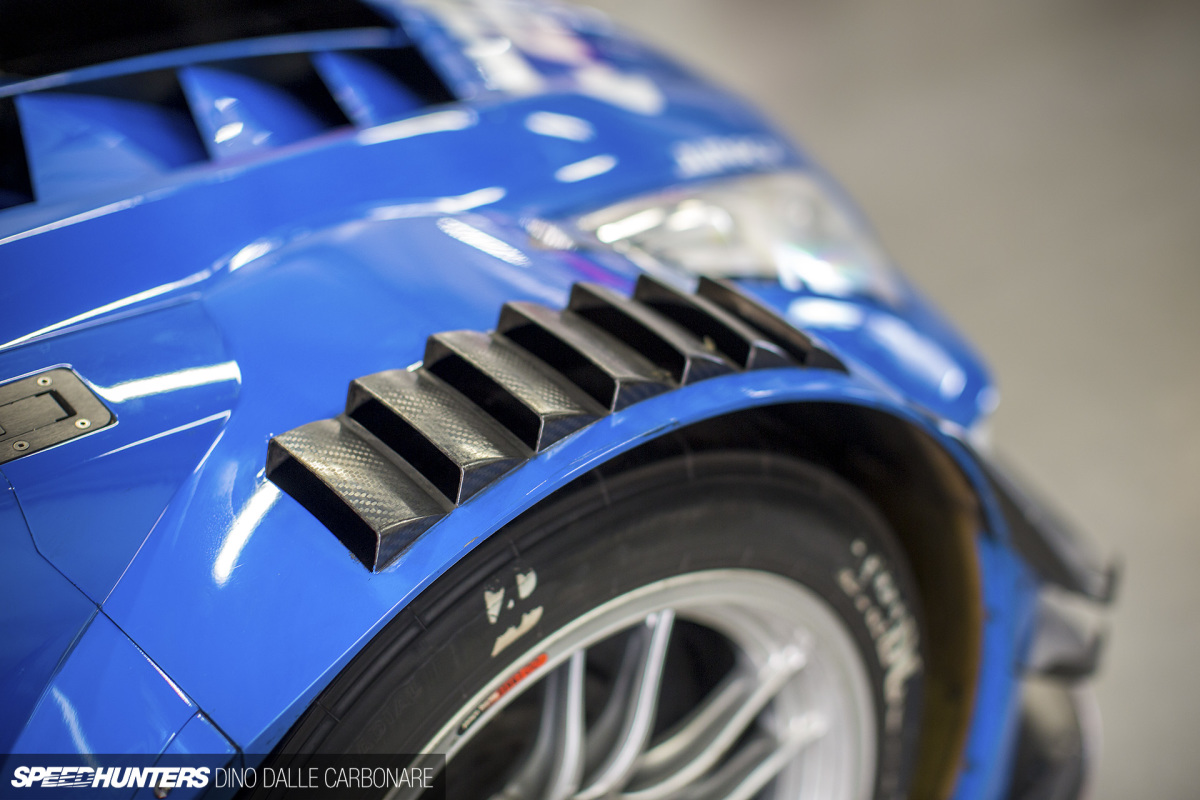
Fender-top extractors are something we’re now seeing used in time attack, and they’re there to take pressure developed in the wheel well and channel it as cleanly as possible around the car.
Aero management through the car’s gaping mouth and the air guides within it, around the engine and all that there is in there, is a critical part of the whole car. If you think about it, anything you draw up air into could potentially become a big air brake if you don’t manage the flow precisely and smoothly, and possibly make good use of it. One of the most noticeable differences from last year’s car is that the front splitter is quite a lot shorter, instantly cutting front downforce in one fell swoop.

Imposing much?
Still on the subject of air management is what to do with the air that’s been used to cool, and thus has passed through the various heat exchangers that sit in the front section. That’s where hood venting comes in, and I’m really liking the way the 2017 design looks here. Function can indeed be one with form.

The rear section of the front fenders and the side skirt design are again quite different from last year. They do the best possible job of managing the air around over and under the car, but at the same time factor in that 25% decrease in aerodynamic load.
It’s crazy how the length, shape and rake of every little flap and wing is carefully engineered to do a specific job while staying within the class regulations.
And one of those rules stipulates that all cars should have catalytic converters. The design of the core is pretty intricate, something you’d have to guess is to create just the right amount of back pressure so as to not upset the engine’s exhaust flow.
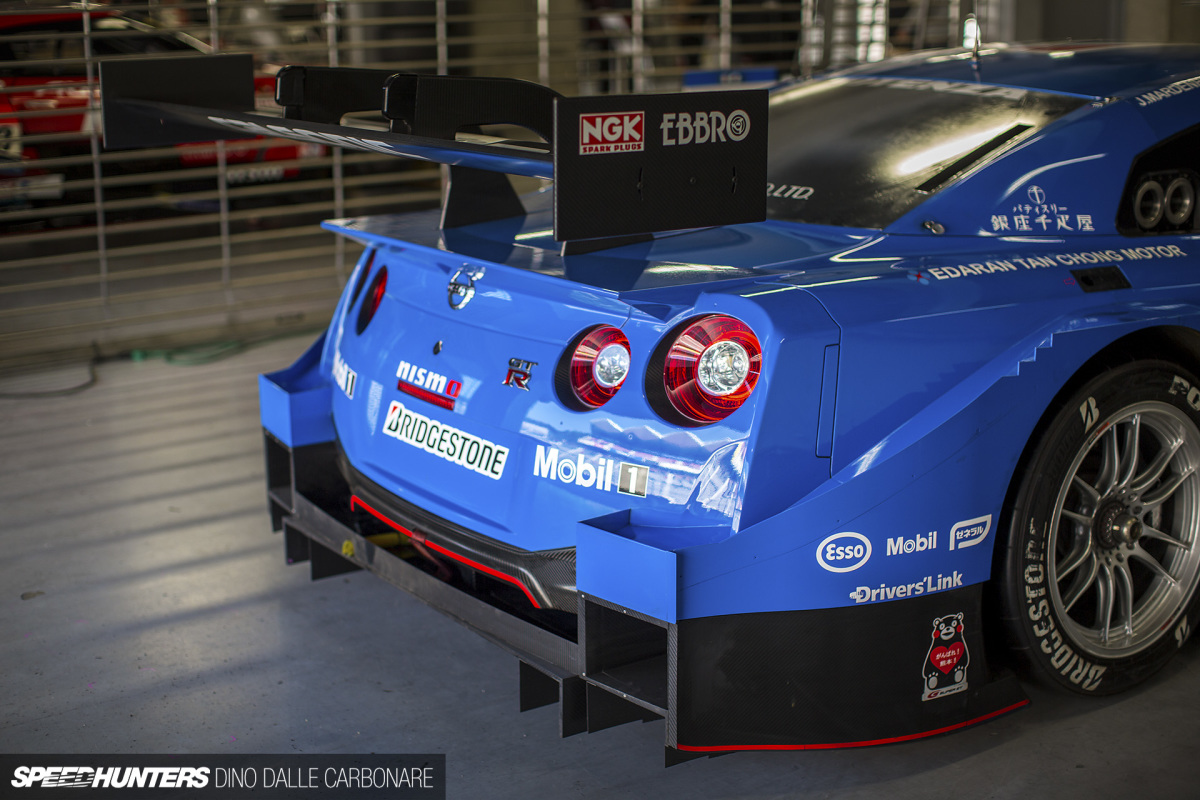
Compared to the front and front fender design, the rear looks a little less complicated. It’s a lot smoother and that’s because the lower section at least is trying to extract and flow away air without creating too much turbulence.
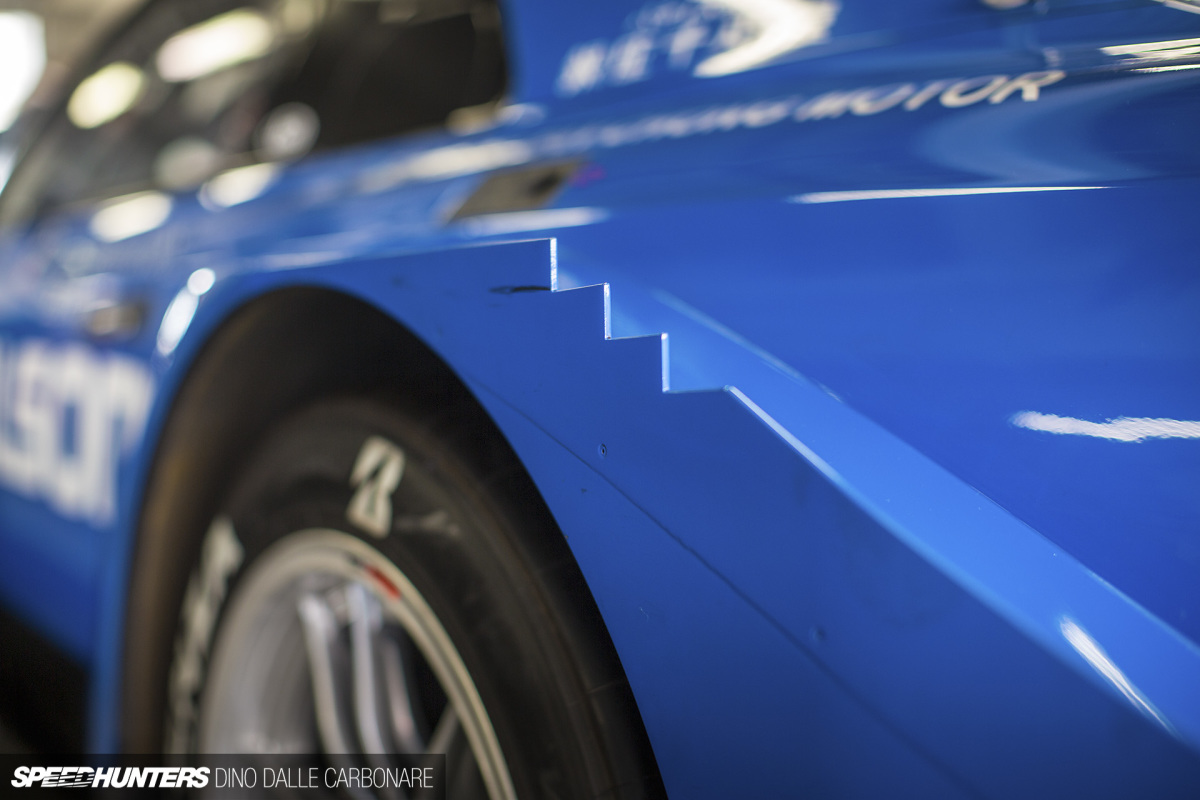
Then there are these little 90-degree, saw-edged details along the outer profile of the fenders. These are in place to shed vortices, helping clean up the airflow around the car.

Here’s a look into the big rectangular extractors at the rear, where you can see right through to the massive rear slicks.
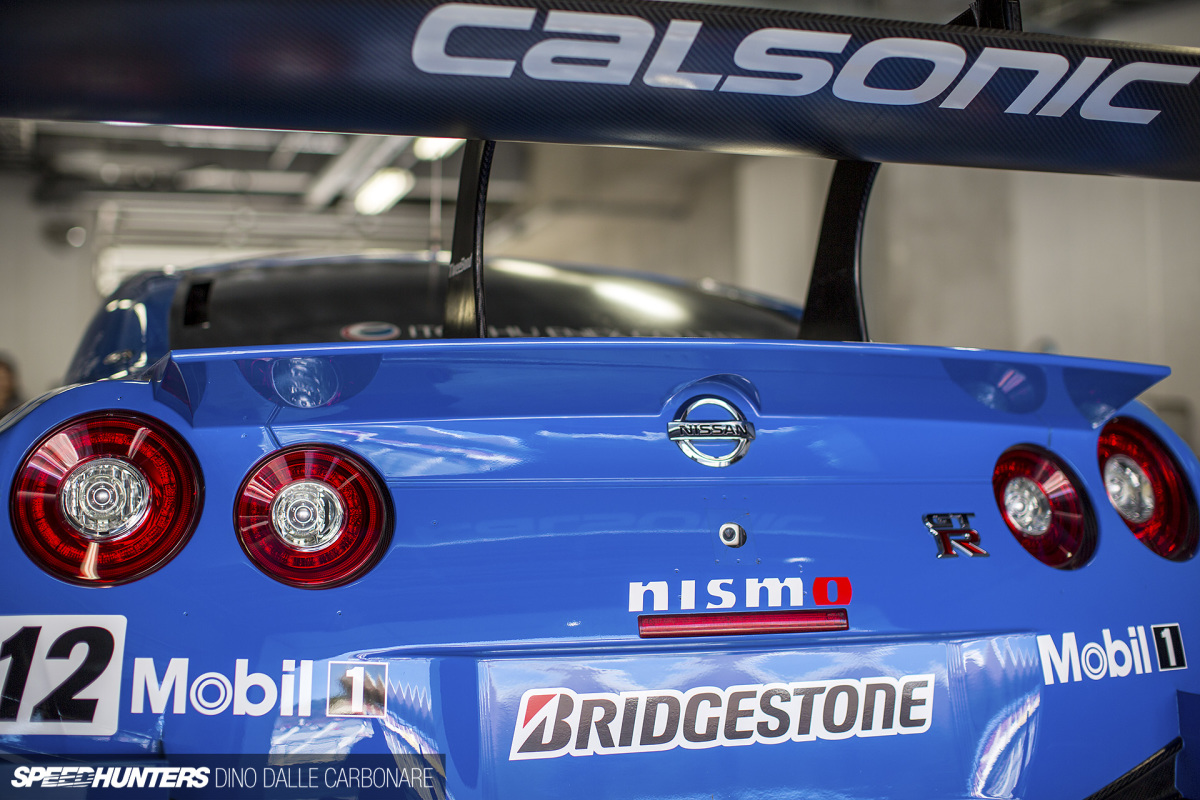
The rear section of the GT-R almost looks identical to the road car, and on the trunk section a little boot spoiler has been added.

Of course, it all ends with the rear wing, which is relatively simple and not too big compared to even some of the fastest cars in time attack.
I always enjoy taking closer looks at race cars of this level; there’s much to take in and it’s fun just trying to make sense of it all.
Dino Dalle Carbonare
Instagram: speedhunters_dino
dino@speedhunters.com
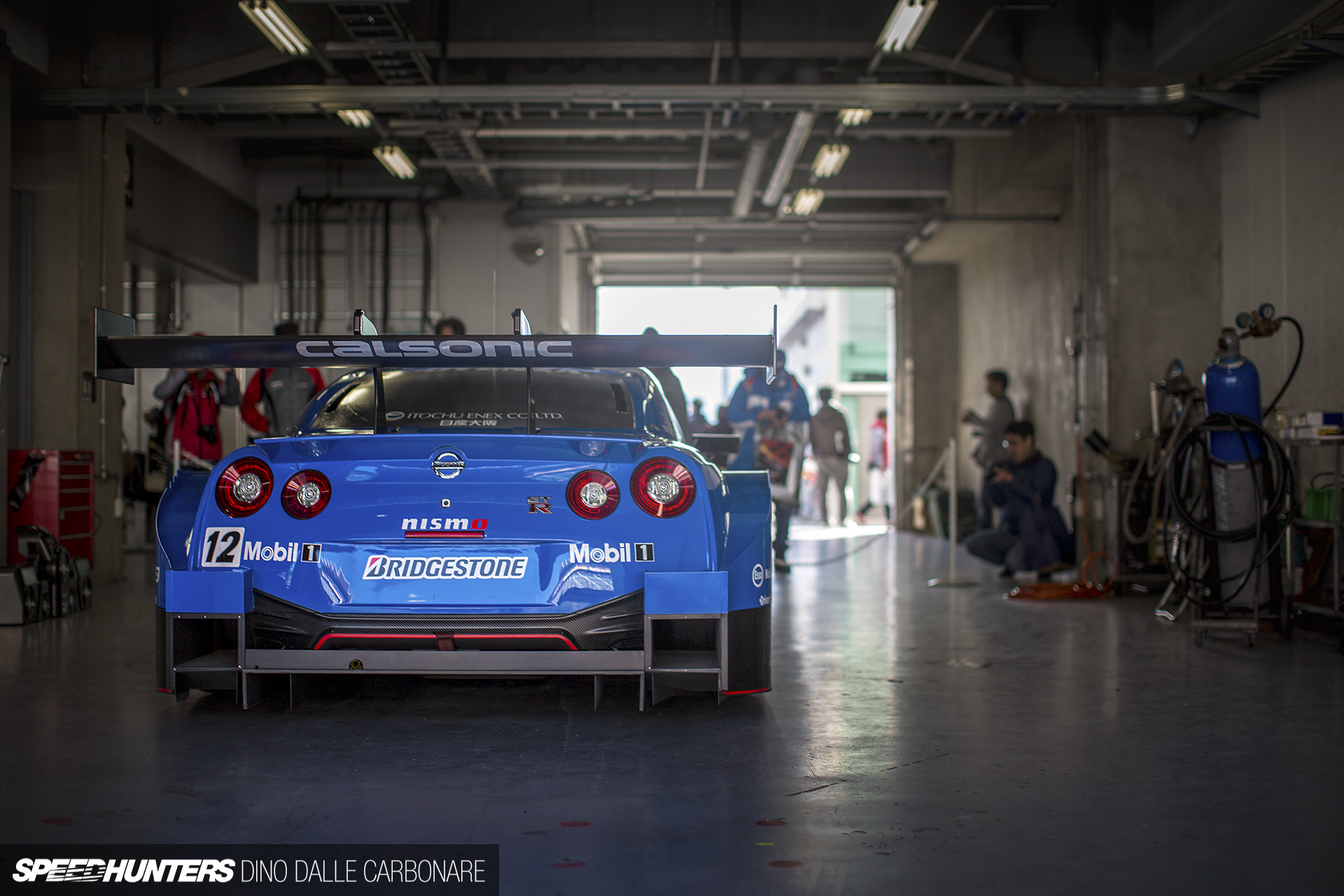




















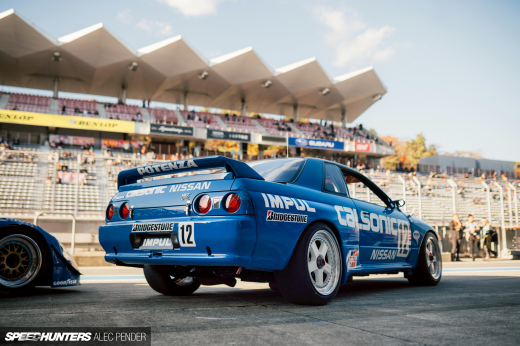







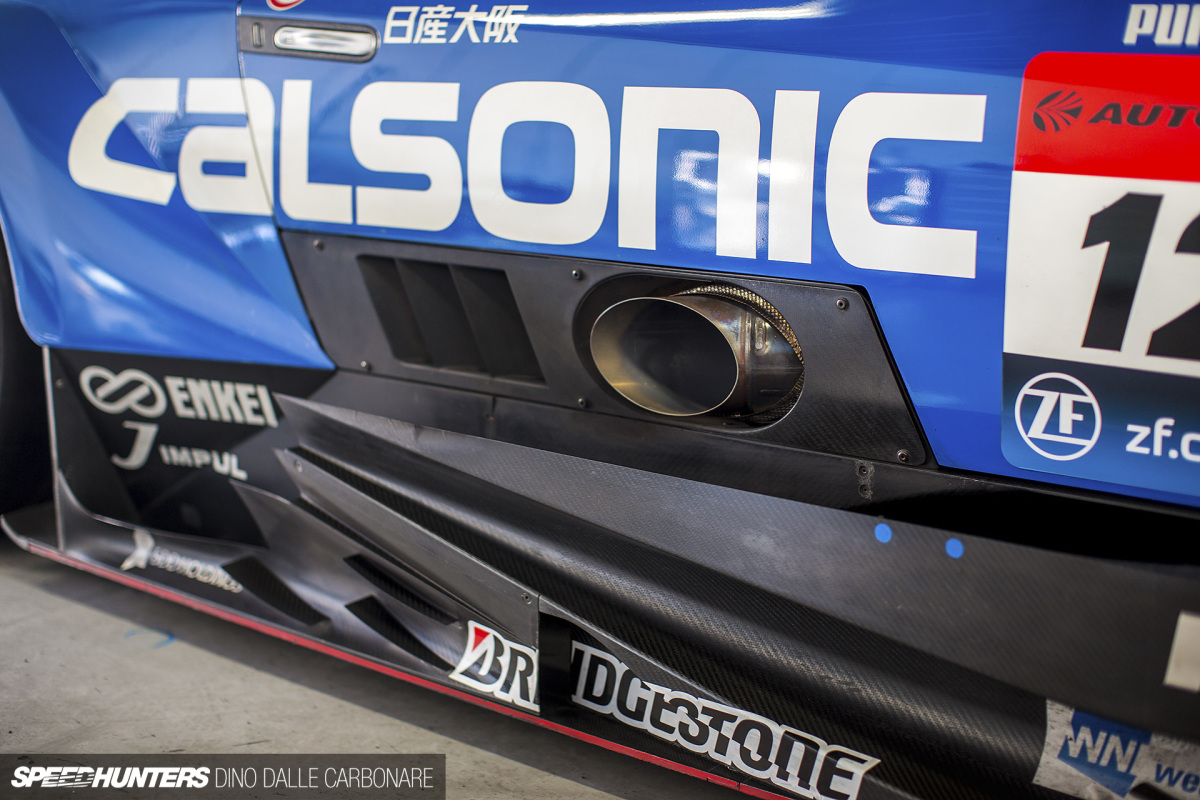






Great pics as always Dino, but im sure these arent the ONLY pics u took, would it be possible for this post and potentially future Speedhunters post where we can get an access to a specific link with any additional pics that you could not include in your post???
Pretty cool to see up close. I'd be interested to see the lap delta between one of these cars and a time attack car with a similar power to weight ratio / tire combination. Aero gets pretty complex when you factor in things like pressure centers and lateral centers of pressure. Too bad no pictures of the underbody, most people forget that downforce is really created by the underbody design of the car. Wings and splitters are more or less there to fine tune balance and centers. The real magic happens under the car. Thanks for the photos Dino!
Is that a little camera under the rear badge?
Makes it easier to see behind you....
I'm wondering how fast are the GT500 and GT300 class compared to the GT3 and GTE class in Europe and North America?
GT300 is the same speed as FIA GT3, which is what IMSA GT Daytona is. GTLM and GTE are slightly faster.
In practice, the GT300 cars are closer in speed to the GTE/GTLM cars, due to the open tire war in GT300.
GT500 is faster than every closed top race car minus LMP1. GT500 is faster than LMP2, faster than DTM, faster than DPi.
GT300 is basically gt3 (but different name ) hence the Z4, AMG gt3, 488 etc competing. I’m not too sure about the exact regulations though.
Oddly enough, GT3 does not really have a set of regulations. They Performance Balance all the entries by running laps at a closed test and then make adjustments. Pretty interesting, and one reason for the variety of manufacturers in GT3. GT300 has regulations, but I am uncertain if they are BOP'd to match GT3, or if that is just a happy coincidence.
Amazing... if possible please do one for lexus & honda too. thanks alot!
I vant to zee ze engeene.
Even if same across board
Amazing, hope to see more of such posts.
Wish tamiya made this in scale, maybe the shapes are too complex to mold it in plastic....
Try looking up Ebbro. They have a loty of super gt stuff!
*lots
>Honda, Toyota and Nissan – switched to turbocharged 2.0-liter engines, immediately doing away with the unique character that separated them from each other
Aw f*** that!
That is the most beautiful catalytic converter I've ever seen.
That is the most beautiful catalyst core I've ever seen. It looks like a 3d printed work of art!
Is that really the CAT there at the end of the exhaust system? Seems a little odd having a CAT at the end of the system, would of thought that would ruin the gas flow an create a lot of back pressure? I’m just guessing here.
I was formally trained to build engines at a school where one of our teachers was an Indy / NASCAR engine builder with multiple championships to his name. He actually met Tsuchiya and worked with him at one point. When someone asked him about back pressure he said, "you never want back pressure in a race car." I'd guess that has more to do with regulations and politics than performance.
It's a pretty common design in motorsports, WRC runs something very similar.
*The rear wings of all the GT500 cars are outsourced and are limited by the regulations to be that small.